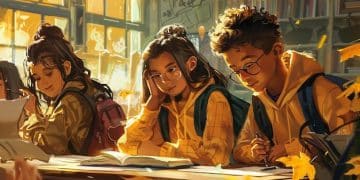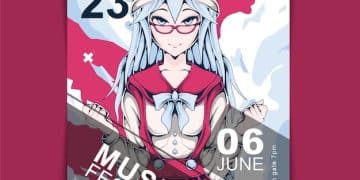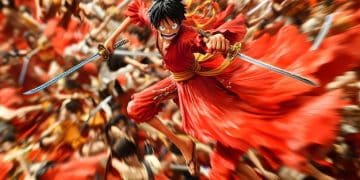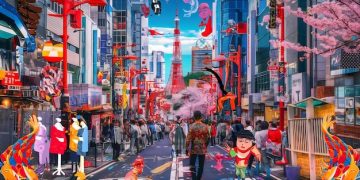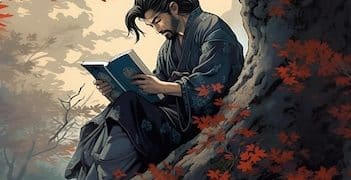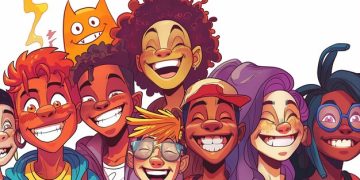Shonen Tropes: Love ‘Em or Hate ‘Em? A Deep Dive
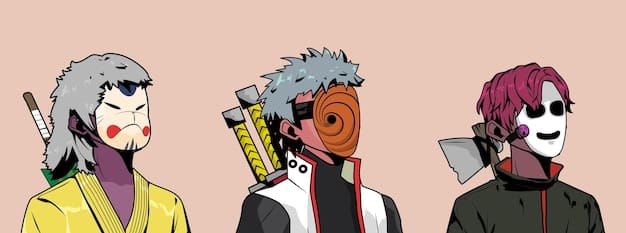
Shonen tropes are storytelling devices common in shonen manga and anime; some are beloved for adding excitement and camaraderie, while others are criticized for being repetitive or hindering character development, creating a love-hate relationship with fans.
The world of shonen manga and anime is filled with thrilling battles, heartwarming friendships, and epic adventures. But beneath the surface of these captivating stories lie the **shonen tropes** that we’ve come to both love and hate, because these storytelling devices have become so ingrained in the genre.
What are Shonen Tropes?
Shonen tropes are narrative devices, character archetypes, and recurring themes commonly found in shonen manga and anime. These tropes act as shortcuts, instantly communicating specific ideas or emotions to the audience.
From the underdog protagonist to the power of friendship, these elements have defined the genre for decades. But is our reliance on these tropes holding back shonen anime today?
Understanding the Basics of Shonen Tropes
Shonen tropes are the building blocks of many beloved stories. They help set up the plot, develop characters, and create emotional connections with the audience.
- The Underdog Protagonist: A character who starts weak but has limitless potential.
- The Power of Friendship: Bonds between characters that give them strength.
- The Mentor Figure: An experienced character who guides the protagonist.
- The Tournament Arc: A competition where characters test their skills against each other.
While these tropes can be effective, they can also become predictable and stale if overused or poorly executed. That’s why its important to understand when and how to apply them.

Successfully incorporating these tropes means crafting a familiar yet engaging experience for the fans. It’s about finding that balance between honoring the traditions of the genre and forging new paths in storytelling. Without the balance story becomes too predictable.
Loved Shonen Tropes
Some tropes are beloved by fans for bringing excitement and nostalgia to their favorite series. These tropes tap into our sense of adventure, camaraderie, and personal growth.
From the thrill of a good training arc to the charm of a well-executed rivalry, here are a few shonen tropes that continue to resonate with audiences.
The Training Arc
Training arcs are a time-honored tradition in shonen anime, allowing characters to grow stronger and more skilled through rigorous training. These arcs provide a satisfying sense of progression.
For example, in *Dragon Ball Z*, Goku’s training with King Kai, or *Hunter x Hunter*, Gon and Killua learn Nen. This not only increases their power but also deepens their understanding of themselves and the world around them.
The Rival
The rival is a character who pushes the protagonist to be better, creating a compelling dynamic filled with tension and mutual respect. This competition often enhances both characters trajectories,.
Think Goku and Vegeta from *Dragon Ball Z*, or Naruto and Sasuke from *Naruto*. These rivalries fuel personal growth, but also add some of the most memorable moments in their respective stories.
- Enhances Character Development: Rivals force each other to confront their weaknesses.
- Adds Tension to the Story: The anticipation of their next clash keeps viewers engaged.
- Creates Emotional Resonance: Moments of camaraderie between rivals are often very impactful.
Rivalries are important for story arcs, giving the protagonist a goal to work towards.
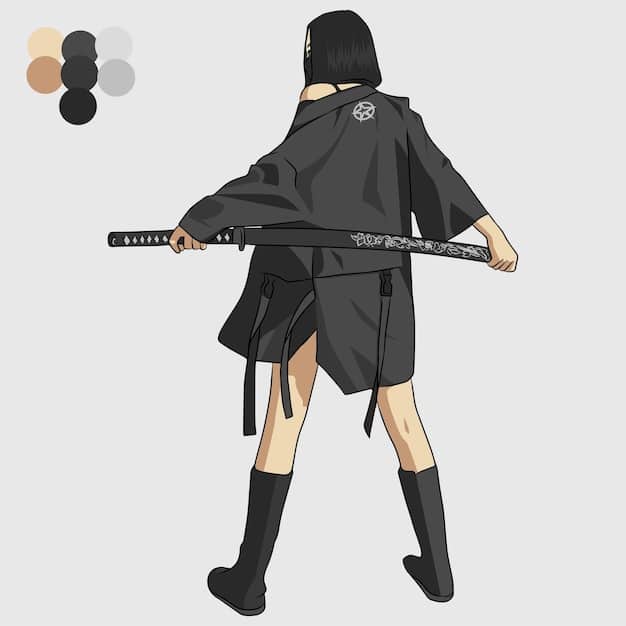
Hated Shonen Tropes
For every beloved trope, there is another that fans have grown tired of. These cliches are often seen as lazy writing or as hindering the character development.
Let’s take a look at some shonen tropes that are commonly criticized, and explore why they might be considered overused or detrimental to the story.
The Unnecessary Harem
Harems involve the protagonist gathering a group of love interests for usually no good reason. These can make the main story feel unfocused and distract from more interesting plot points.
Series like *Tenchi Muyo!* and *Love Hina* often feature harems that overshadow everything else that’s happening. It can also minimize characters to just love interests, and not individuals with goals and motivations of their own.
The Damsel in Distress
This trope involves a female character who is constantly being captured or needs to be rescued by the male protagonist. This portrays women as weak and incapable.
For example, Sakura from *Naruto* is often criticized because she frequently needs saving. This trope reinforces traditional gender roles and diminishes the contributions that female characters can bring to the story.
- Reinforces Gender Stereotypes: Perpetuates the idea that women are helpless.
- Limits Character Agency: Reduces female characters to plot devices.
- Undermines Story’s Potential: Misses opportunities for more complex roles.
Although it sometimes makes sense to make a character ‘damsel in distress’, it is important that they become stronger and independent throughout the story.
The Fine Line Between Homage and Cliche
The difference between paying homage to classic anime and falling into cliche can be very thin. It’s about how a trope is used with a plotline.
The key is to use them in ways that add to the experience, rather than taking away and making it obvious.
Refreshing Familiar Tropes
Many writers have managed to take old tropes and make them feel new. Characters might have new motivations, or the world itself might have a new take on something common.
For instance, *My Hero Academia* takes the ‘school for heroes’ trope but adds a complex social structure and a world filled with unique powers. This creates a familiar experience with a fresh perspective.
Avoiding Predictability
One of the biggest issues with overused tropes is that they can also make the story feel predictable. If the readers realize whats going on, they might lose their attention.
To do this, writers might include some plot twists. For example, killing off a protagonist can remove any prediction that they will always be safe during battles.
- Subvert Expectations: Surprise the audience by breaking away from the usual path.
- Add Depth to Characters: Give characters unique backstories, goals, and personal growth.
- Explore New Themes: Use tropes to explore relevant topics.
When adding twists to stories, be careful not to go too far. People read books like this because they have certain expectations, so make sure that the overall feeling is still kept.
The Future of Shonen Anime
As the genre continues to evolve, there is growing hope that newer authors get creative when writing the plots and characters. The future of shonen anime depends on this.
By embracing diversity, challenging norms, and exploring complex themes, shonen anime can continue its role that connects with people from all over.
Embracing Diversity
One way to move beyond tired tropes is to embrace a lot of the diversity that isn’t seen in most anime.
Including characters from different backgrounds will add more to the story. This will not only make the story more engaging, but also create a world that readers can relate to more.
Challenging Gender Norms
Shonen anime has a ton of potential to deconstruct gender norms and stereotypes. This means making sure that all the characters can act beyond what is expected of them.
In the future, shonen anime can subvert expectations and create narratives that are not only more inclusive, but also more engaging and thought-provoking.
Making the ‘damsel’ character become more powerful than even the main character, will add more to the plotline.
Tropes have their place in anime (and all fiction), as they can be helpful tools when planning and writing new anime. However, it is important to have a good balance.
| Key Element | Brief Description |
|---|---|
| 💪Underdog Protagonist | A hero who starts out weak but grows strong. |
| 🤝Power of Friendship | Friends helping each other to gain power and win. |
| ⚔️ Tournament Arc | Characters competing against each other. |
| 🦸Mentor Figure | A trainer to help the protagonist grow. |
Shonen Tropes We Love (and Hate): A Critical Look at Overused Clichés
What are the most common shonen tropes?
Some common tropes include the underdog protagonist, power of friendship, training arc, the mentor character, and the tournament arc.
Why do people love some shonen tropes?
Tropes are loved because they create excitement, make us feel nostalgic, and connect us through shared experiences, tapping into camaraderie and personal growth.
Why do people hate some shonen tropes?
Certain tropes like the unnecessary harem and damsel in distress are often criticized for reinforcing harmful stereotypes and hindering character development.
How can shonen tropes be refreshed?
Tropes can be refreshed by adding unique motivations to characters, creating original world settings, and implementing plot twists that subvert readers expectations.
What is the future of shonen anime?
The future of shonen anime lies in embracing diversity, challenging gender norms, and exploring complex themes to create more engaging and diverse stories.
Conclusion
As you can see, there are tropes that fans will love and tropes that fans will hate. Its up to the writers to find a balance to be able to keep the story moving forwards, while also keeping it engaging.
